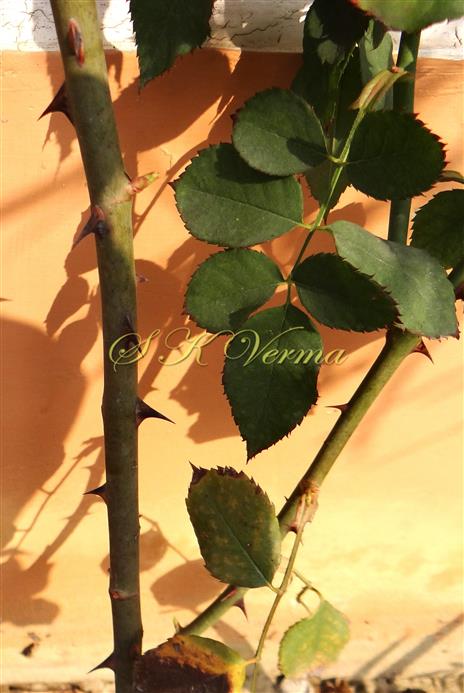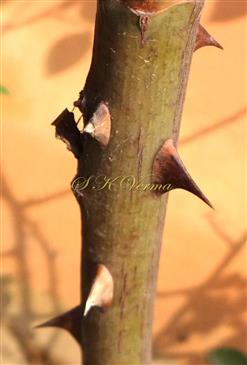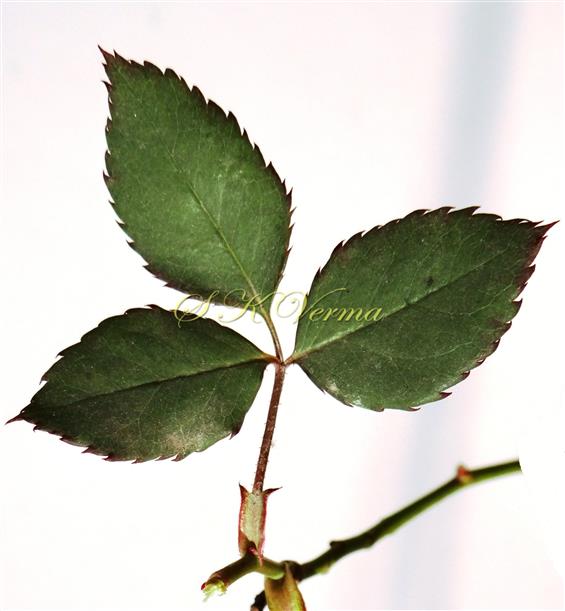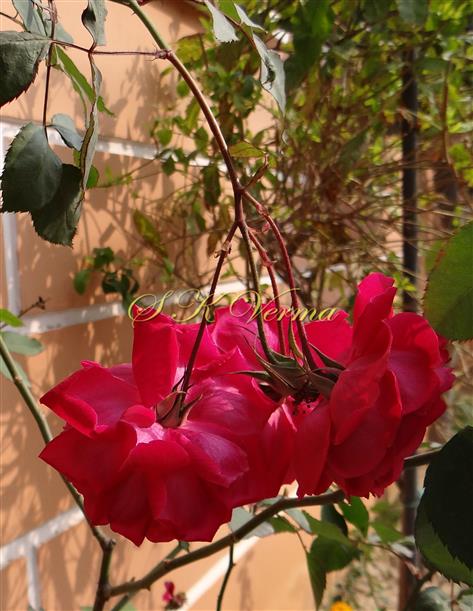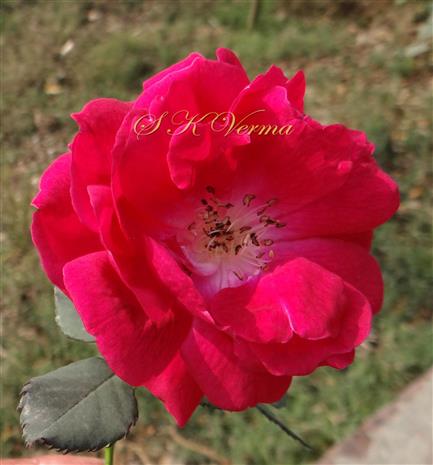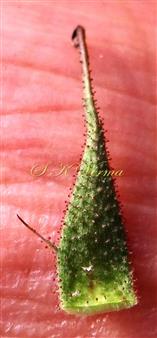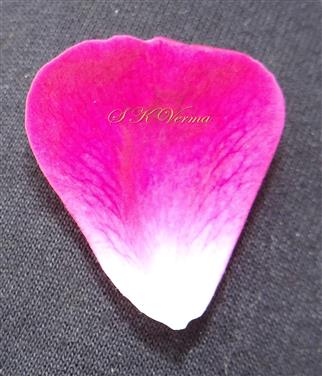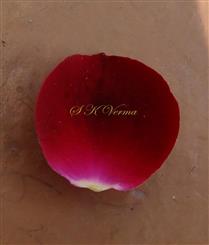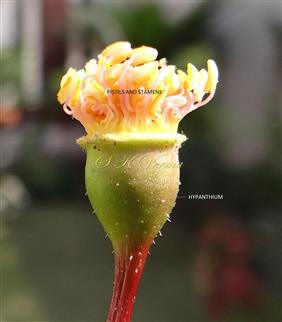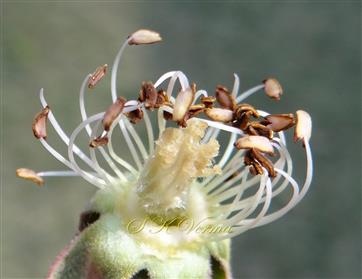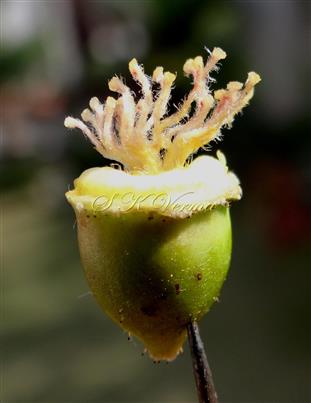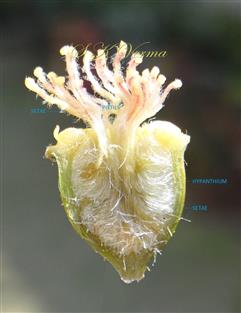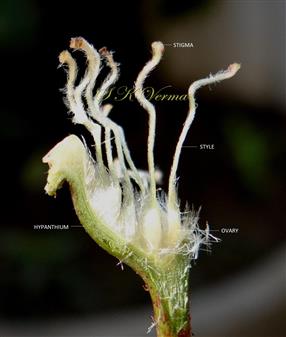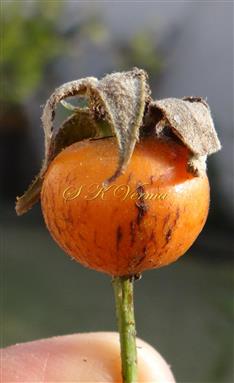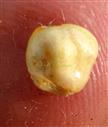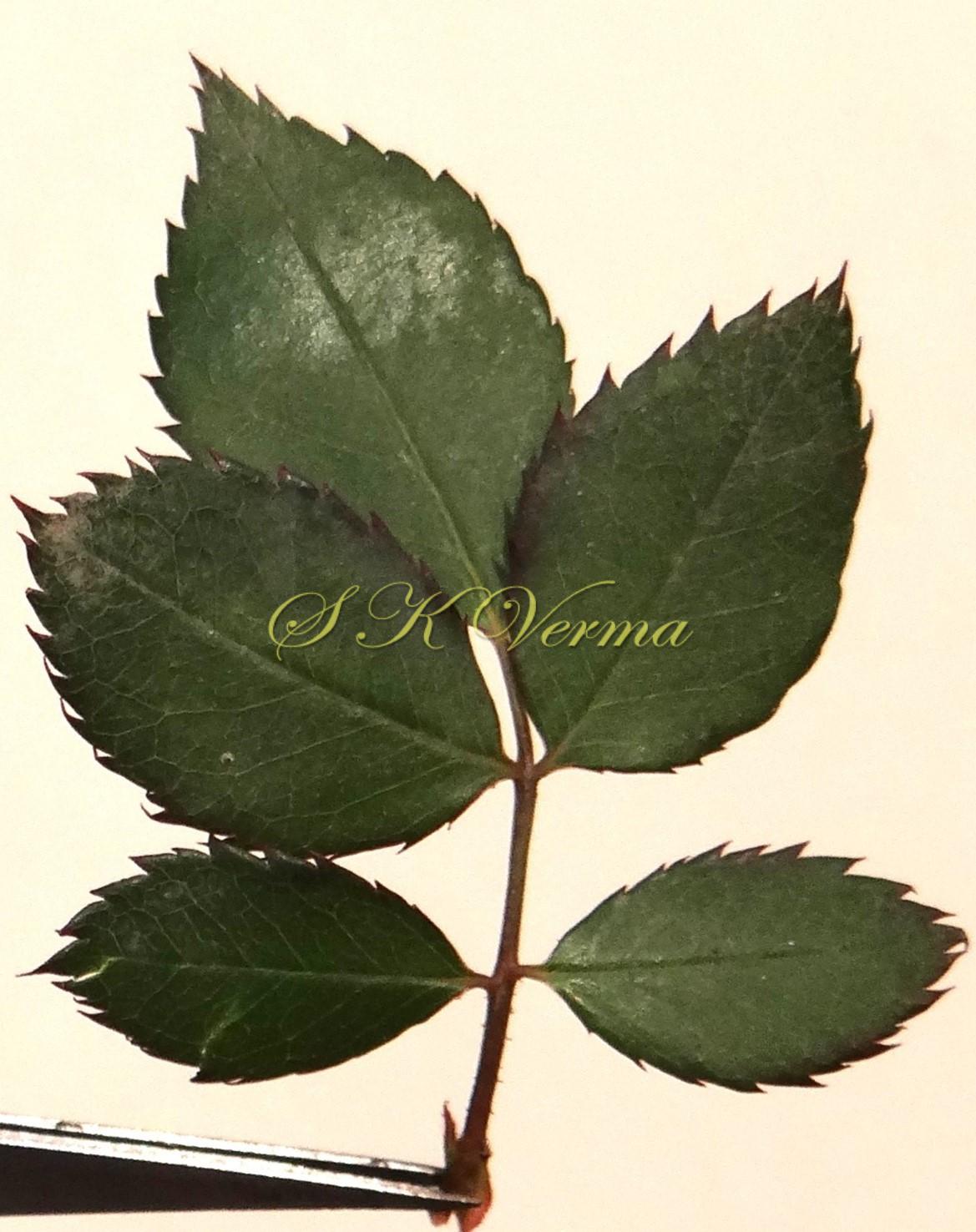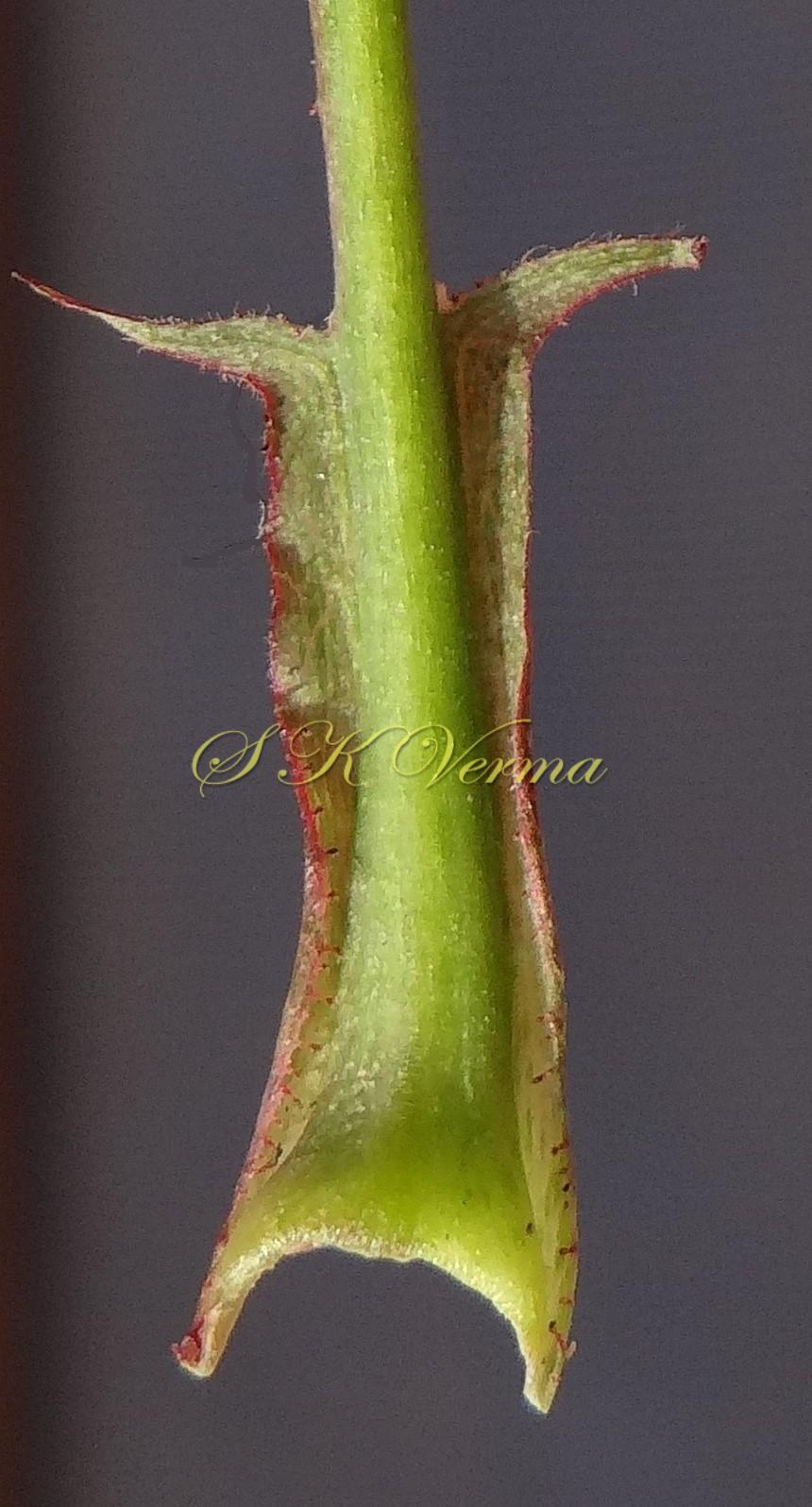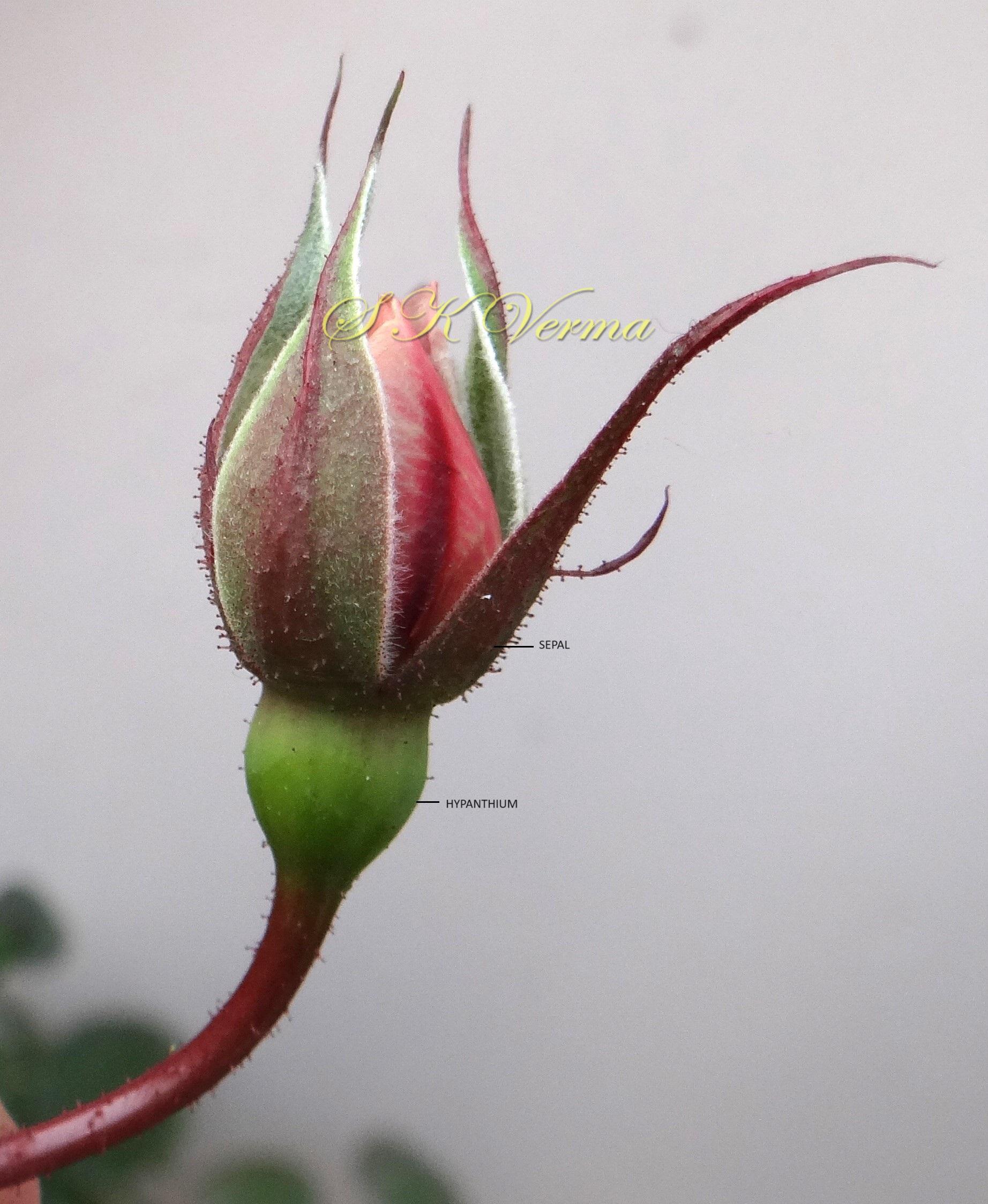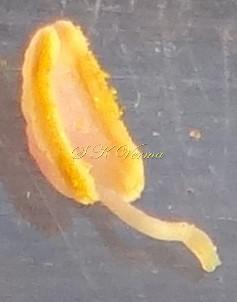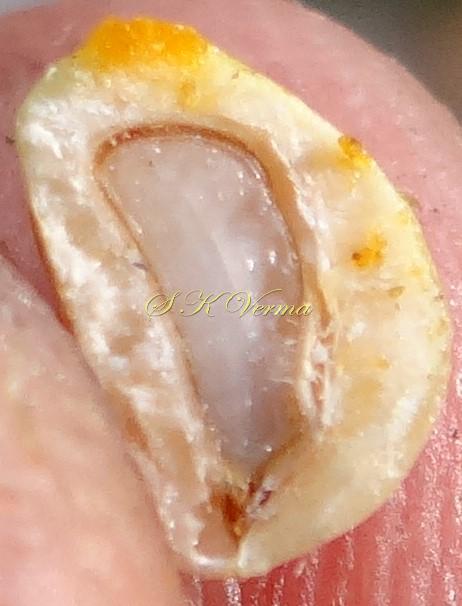ROSA
Rosa
L., Sp. Pl. 1: 491. 1753; Gen. Pl. ed. 5. 217. 1754; Fl. Or. 2: 669. 1872; Hook. f., Fl. Brit. Ind. 2: 365-368. 1878; Ghori & Panigrahi, Fam. Rosaceae Ind. 2: 191-367. 1995; Robertson, Fl. China @ eFloras.org 9: 339; Zielinski, Fl. Pak. @ eFloras.org p. 103; Lewis et al., Fl. North Amer. @ eFloras.org.
Shrubs, erect or climbing, usually armed with prickles, pubescent, glandular pubescent or glabrous. Leaves alternate, usually imparipinnate, rarely simple, leaflets serrate; stipules adnate to petioles, rarely absent. Flowers terminal, solitary or corymbose, rarely in a compound corymb or panicle, actinomorphic, bisexual, perigynous; bracts solitary, many or absent. Hypanthium globose, ovoid, urceolate or cupulate, constricted at mouth. Sepals 5 or 4, imbricate, margin entire or variously lobed, lobes large. Petals 5 or 4 (numerous in cultivated double flowers), free, imbricate, white, yellow, pink or red. Disc lines the hypanthium and nearly closes the mouth. Stamens numerous in several whorls, inserted at or on the edge of disc. Carpels numerous, rarely few, free, inserted at margin or base of hypanthium, usually sessile, ovary unilocular with a single ovule; styles terminal or lateral, exerted or not, free or connate; stigmas thickened. Fruits of coriaceous or bony achenes enclosed in the coloured fleshy hypanthium, the whole forming a false berry-like fruit, woody on maturity. Seeds pendulous.
149 species
Rosa indica
Rosa indica
L., Sp. Pl. 1: 492. 1753.
Erect shrubs, armed with prickles, prickles curved, +/- 1 cm with broad base, compressed, subulate. Leaves alternate, imparipinnate, leaflets 3-5(-7), +/- 13 cm x 12 cm; leaflets elliptic, elliptic-ovate, sometimes obovate, up to 7 cm x 4 cm, glabrous, petioluled, terminal leaflet usually largest with longest petiolule, apex acute, acuminate or obtuse, margin prominently serrate, base rounded or cuneate; rachis abaxially occasionally shortly prickly; stipules adnate to petiole, glabrous or glandular-pubescent. Flowers terminal in corymbs, 7+ cm in diameter, actinomorphic, bisexual, perigynous, red, fragrant; pedicels +/- 5 cm, glandular-pubescent. Hypanthium more or less globose, constricted at mouth, glandular-pubescent. Sepals 5, free, imbricate, borne at apex of hypanthium, ca. 2.5 cm long, reflexed at anthesis, subulate, glandular-pubescent adaxially, tomentose pubescent abaxially. Corolla double; petals numerous, free, red, up to 4.5 cm x 3.5 cm, obovate, base shortly clawed or narrowed, apex rounded, emarginate or shallowly 3-lobed. Disk lines the hypanthium and nearly closes the mouth. Stamens numerous, free, inserted at disk, incurved; filaments filiform +/- 5 mm, white, incurved; anthers +/- ovoid, 2-2.5 mm long, bithecous, basifixed, longitudinal dehiscence. Carpels numerous, sessile, inserted at bottom of hypanthium; ovary unilocular with a single ovule; styles terminal, free, exserted; floor of hypanthium, ovary and style with long and dense setae; stigma thickened, capitate. Fruits bony achenes enclosed in the coloured fleshy hypanthium, the whole forming a false berry-like fruit; hypanthium woody on maturity.
Common Names: Indian Fragrant Rose, Cyme Rose; Desi Gulab, Sudbarg, Bussorah, Fasti Gulab (Hindi)
